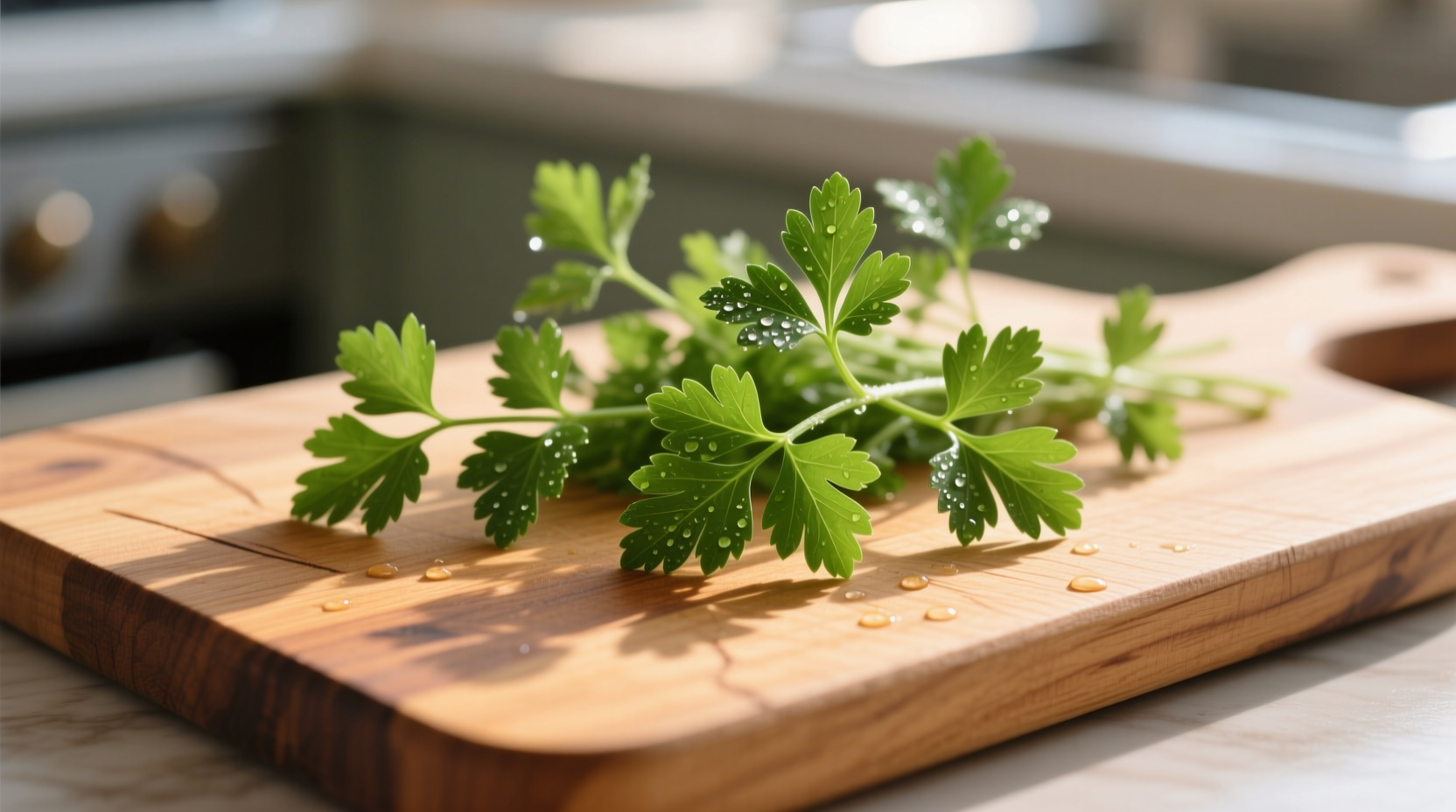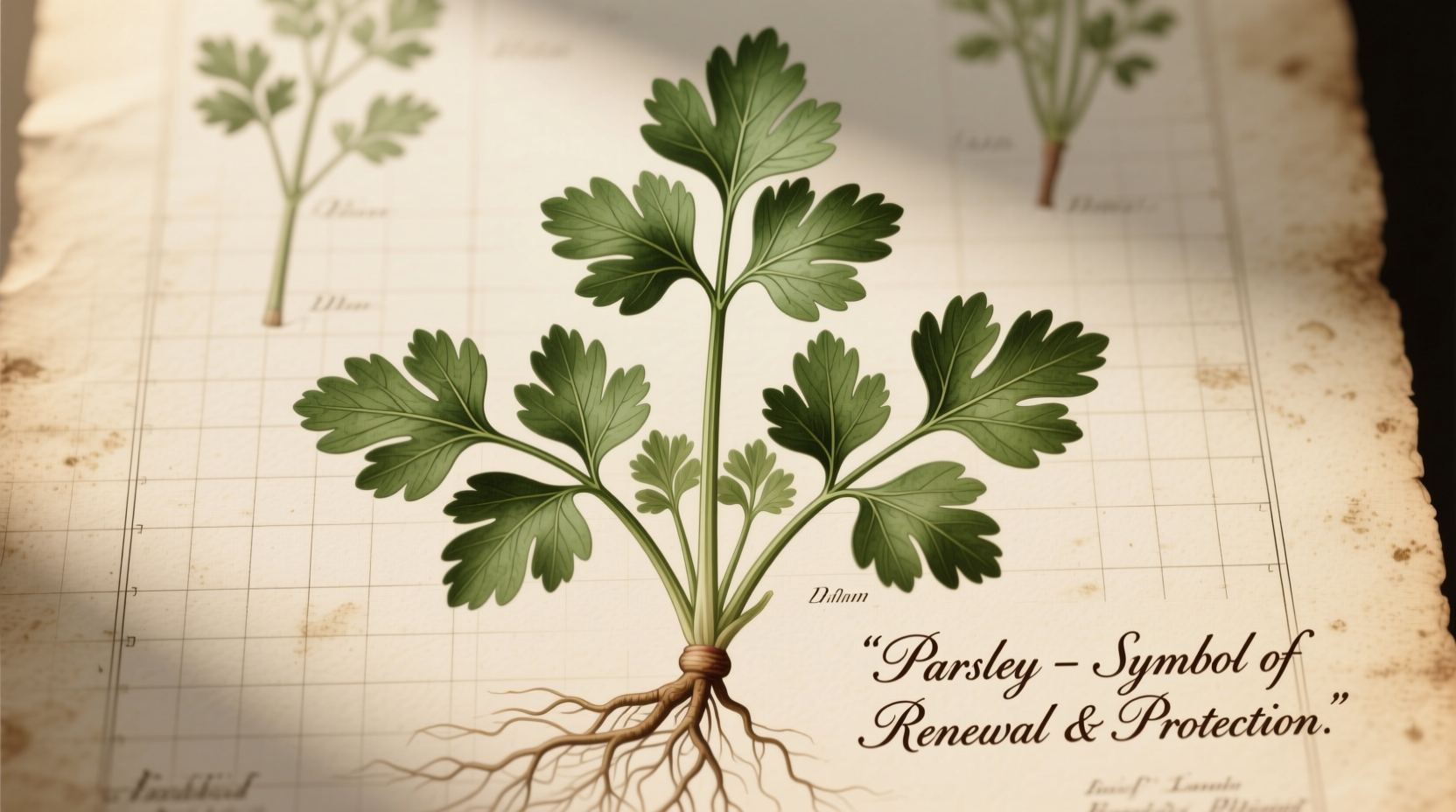When you search for "parsley meaning," you're likely seeking more than just a dictionary definition. This versatile herb has carried profound symbolism for thousands of years while serving as a kitchen essential worldwide. Understanding both its literal definition and cultural significance reveals why parsley remains relevant far beyond garnish duty.
What Parsley Actually Is: The Botanical Definition
Parsley (Petroselinum crispum) belongs to the Apiaceae family, which includes carrots, celery, and cilantro. This biennial plant features bright green, ruffled leaves and grows to about 12-18 inches tall. There are two primary varieties you'll encounter:
- Curly parsley - The most common type with tightly curled leaves, offering a mild, fresh flavor
- Italian (flat-leaf) parsley - Features broader, flatter leaves with a more robust, slightly peppery taste
Unlike many herbs that lose potency when dried, parsley maintains significant nutritional value whether fresh or preserved. It's exceptionally rich in vitamins K, C, and A, making it far more than just a decorative plate accent.

The Word's Journey: Parsley Etymology Explained
The term "parsley" traces back to the Greek word petroselinon, literally meaning "rock celery" (petra = rock, selinon = celery). This reflects parsley's natural habitat growing in rocky Mediterranean terrain. Through Old English "petersilie" and Old French "persil," the word evolved into today's "parsley."
This etymological path reveals how ancient cultures recognized parsley's botanical relationship to celery while noting its distinct growing conditions. The herb's scientific name Petroselinum crispum preserves this Greek heritage while describing its characteristic curled leaves (crispum).
From Ancient Rituals to Modern Kitchens: Parsley's Historical Timeline
Parsley's significance extends far beyond contemporary cooking. Understanding its historical journey provides context for its enduring symbolism:
| Historical Period | Cultural Significance | Documented Evidence |
|---|---|---|
| Ancient Greece (5th century BCE) | Used to crown victors at athletic games and decorate tombs as a symbol of remembrance | Theophrastus' Historia Plantarum documents parsley's ceremonial use |
| Roman Empire | Believed to have protective properties against poison; worn as garlands during feasts | Pliny the Elder's Natural History references parsley's medicinal applications |
| Medieval Europe | Associated with death and used in funeral rites; considered unlucky to transplant | British Library's Herbarium Apuleii Platonici details medieval herb beliefs |
| 16th-18th Century | Transitioned from medicinal herb to culinary staple in European cooking | Nicholas Culpeper's Complete Herbal documents this shift in usage |
| Modern Era | Global culinary essential with renewed interest in its nutritional benefits | USDA National Nutrient Database confirms parsley's vitamin density |
Cultural Symbolism: What Parsley Represents Worldwide
The meaning of parsley varies dramatically across cultures, reflecting humanity's complex relationship with this humble herb. While some societies embraced parsley as a symbol of life and victory, others associated it with death and misfortune.
In ancient Greece, parsley represented both triumph and remembrance. Victorious athletes received parsley wreaths, while the herb adorned gravesites. This duality continued through Roman times when parsley garlands protected diners from poisoning. By contrast, medieval Europeans considered parsley unlucky to transplant, believing this disturbed the dead.
Modern interpretations have largely shed negative associations. Today, parsley symbolizes freshness, vitality, and culinary sophistication. In Mediterranean cultures particularly, generous use of parsley signifies hospitality and attention to detail in meal preparation.
Practical Applications: Using Parsley Meaning Today
Understanding parsley's historical significance enhances how we use it in contemporary contexts. While we no longer crown athletes with parsley wreaths, its symbolism informs modern culinary practices:
- Culinary symbolism - In Middle Eastern cuisine, tabbouleh's generous parsley content represents abundance and celebration
- Medicinal applications - Modern research confirms ancient beliefs about parsley's diuretic properties (National Center for Biotechnology Information study, 2020)
- Cultural traditions - In some Eastern European communities, parsley remains part of ceremonial dishes for special occasions
However, certain limitations exist. Unlike ancient times when parsley served as primary medicine, modern science shows it should complement rather than replace medical treatment. Its oxalate content also means those with kidney issues should moderate consumption.
Common Misconceptions About Parsley Meaning
Several persistent myths surround parsley's significance. Many believe parsley was universally considered unlucky in historical contexts, when actually this belief was primarily medieval European. Others think parsley's culinary use is relatively recent, ignoring its prominent role in ancient Roman cooking documented by Apicius' De Re Coquinaria.
Perhaps the most widespread misconception is that parsley serves merely as decoration. In reality, professional chefs consider it a flavor component essential to many dishes, particularly in Lebanese, Turkish, and Italian cuisines where it features prominently in signature recipes.
Bringing Parsley Meaning Into Your Kitchen
Appreciating parsley's rich history transforms how you incorporate it into daily cooking. Instead of viewing it as mere garnish, consider these practical applications that honor its historical significance:
- Use flat-leaf parsley in tabbouleh to connect with ancient Middle Eastern culinary traditions
- Add parsley to bouquet garni for soups and stews, continuing a French culinary practice dating to the 17th century
- Include parsley in chimichurri sauce to honor its South American adaptation
- Grow your own parsley to participate in the herb's millennia-long relationship with human cultivation
When selecting parsley, look for vibrant green leaves without yellowing. Store it like flowers - with stems in water - to maintain freshness. Remember that parsley's flavor intensifies when cooked slowly, making it ideal for sauces and braises rather than quick sautés.











 浙公网安备
33010002000092号
浙公网安备
33010002000092号 浙B2-20120091-4
浙B2-20120091-4